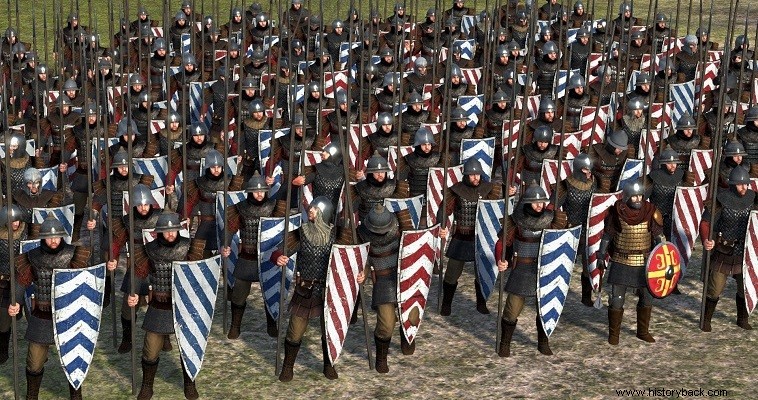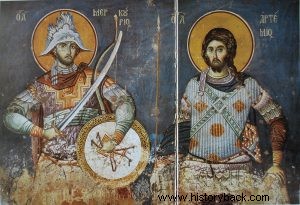
The date of birth of the Despotate of Mystras is the year 1259. Then the army of the reverend king John Palaiologos defeated the Franks in Pelagonia and captured the prince of Achaia. In exchange for his freedom, he granted the castles of Mystras, Monemvasia and Maini.
At first the small Byzantine outpost in the Peloponnese was ruled by a military commander who was replaced annually. This continued until 1349 when the son of the then emperor Ioannis Kantakouzenos, Manuel, took over as governor for life. Before him Andronikos Palaiologos Assan had ruled for six years (1315-21) winning lands from the Latins.
Manuel Kantakouzinos was the driving force behind the development of the Despotate. However, the army was small. According to some sources, the despot maintained small regular forces in Mystras and several pronoiari (holders of welfare, i.e. a lot of land in exchange for military service).
At the same time, however, peasants, as well as the pro-war inhabitants of Taygetos and Mani, the famous Tsakones and the Melingos, enlisted, even for a limited period of time. The pronoiarians formed bodies of heavy cavalry. They had spears, swords, shield, helmet and breastplate. Regular foot soldiers were divided into satellites and archers. The first ones carried helmets, shields, spears and swords and usually some kind of armor.
Regular archers carried a compound bow, a helmet and usually a leather breastplate and sword, but also a small shield. They fought in a dense order, releasing "thunderbolts" of arrows, on command. Peasants were armed mainly with bows, but they fought in a looser class or as acrobats. They did not have the training, cohesion and discipline to face heavier divisions.
Finally the Maniates and the other Oresivians brought spear, sword, shield and javelins. Later, the famous "Soldiers" light horsemen and their foot followers were mostly used. Units of Western mercenary knights were also used.
Sources state that in 1321 the Despotate's army had 36,000 men, a rather excessive number. The despot Manuel Kandakouzinos had 300 elite men of his guard and Arvanites. Many Arvanites moved to the Peloponnese at the end of the 14th century, persecuted by the Turks. The despot Theodore I Palaiologos allowed the settlement of 10,000 Arvanites in return for military service.
The Arvanites fought as light cavalry and light infantry. Later, other Arvanites descended on the Peloponnese. They fought in favor of the Despotate against the Latins and the Turks, but also rebelled many times, under the influence of their own or local lords.
In 1394-95 the sources state that the despot Theodoros I could marshal 20,000 men, while in 1417 this number had decreased to 15,000. The Burgundian Jean Torzelot testifies to the same number in 1439. Other sources state that Despot Demetrius Palaiologos had 6,000 horsemen in 1458.
In 1445 300 Burgundian knights were sent as reinforcements to the then despot Constantine Palaiologos who fought against the Turks, while in 1459 300 Italian mercenaries were sent to the despot Thomas Paleologos. In both cases these few mercenaries were listed as the most elite part of the army, which says a lot.
The army of the Despotate performed satisfactorily in siege operations and ambushes, managing to recover almost all the Peloponnesian territory from the Latins – except the Venetians. But he was unable to face serious tactical forces in the field.
The campaign of 1444-45 which had as a temporary result the forces of the despotate reaching Pindos, ended in a crushing defeat by the Turks at the Hexamile wall of the Isthmus. It was a last ditch effort. The Turks, taking advantage of the divisive and treacherous attitude of Dimitrios Palaiologos, finally captured the Despotate in 1460.

Saints Mercurius and Artemis with typical pronoir equipment of the Paleologian period.
